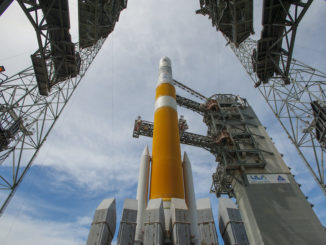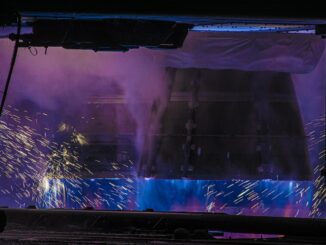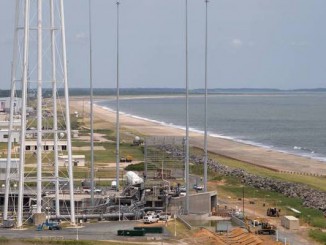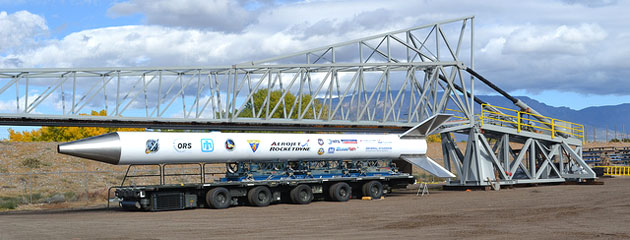
The first flight of a new rail-guided satellite launch system from a military missile range in Hawaii has been delayed until late October due to problems with the rocket’s first stage motor, according to a U.S. Air Force official.
The rail-launched Super Strypi launcher is awaiting an opening in the range schedule at the U.S. Navy’s Pacific Missile Range Facility in Kauai, Hawaii, said Col. John Anttonen, director of the Air Force’s Operationally Responsive Space Office.
The mission aims to demonstrate a concept to accelerate launch preparations, cutting processing time from months to weeks and slashing the cost of launching small satellites into orbit.
The launch was originally set for October 2013, but Anttonen said in the mission appears on track for liftoff in late October 2015 from a new launch pad on Kauai.
“Launch delays of the new launch system were driven primarily by technical development challenges on the first stage motor including design and delivery of the rocket motor case and the integrated rocket motor,” Anttonen said in a response to written questions from Spaceflight Now.
“This motor is now complete along with the rest of the launch vehicle, and the launch is on hold pending an opening in the range schedule,” Anttonen said.
The missile range on Kauai is also used for missile defense testing and other military activities.
Anttonen said the Air Force’s top space official approved proceeding with the launch after the mission’s partners agreed to accept “elevated risk” to the mission.
The Super Strypi is powered by three solid-fueled rocket motors based on technology originally developed for suborbital sounding rockets. The launcher will be spin-stabilized and launch on a tilted truss-mounted rail system to point it in the right direction at liftoff, eliminating the need for a complex and costly guidance system.
The Super Strypi also carries fins for added stability, and a cold gas attitude control system on the second and third stages will maneuver the rocket in space.
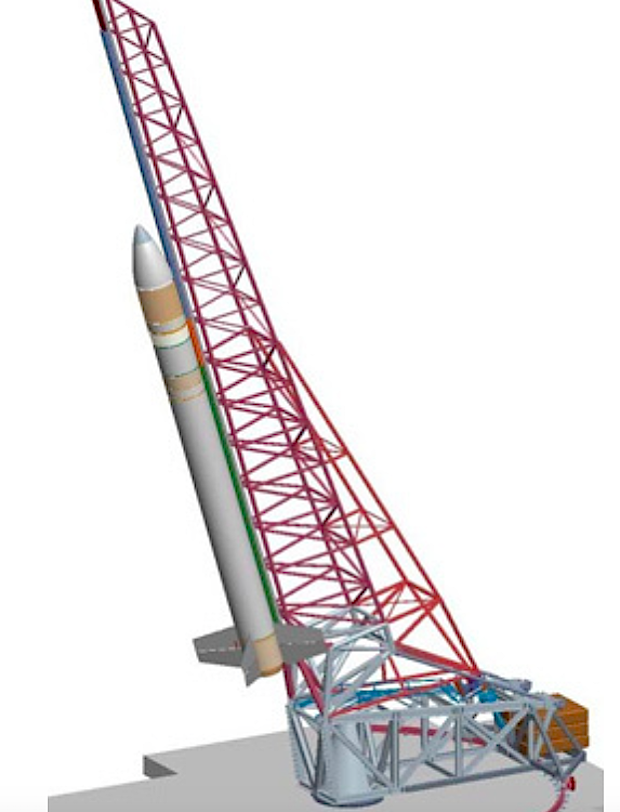
The prime payload assigned for launch on the Super Strypi is the University of Hawaii’s HiakaSat spacecraft, a 110-pound satellite hosting a compact hyperspectral Earth imaging camera that was completed by university students in mid-2013.
Around a dozen more CubeSat secondary payloads will fly into polar orbit aboard the Super Strypi. NASA is sponsoring a package of CubeSats as part of the agency’s educational outreach initiative.
The Super Strypi was designed by engineers at Sandia National Laboratories, building on the Strypi sounding rocket developed in the 1960s for nuclear weapons tests in space. Aerojet Rocketdyne is supplying the Super Strypi rocket’s three rocket motors.
The first stage motor, called the LEO-46, generates nearly 300,000 pounds of thrust. The LEO-46 motor measures 52 inches in diameter and 40 feet long.
Aerojet Rocketdyne completed a ground test firing of the Super Strypi’s first stage rocket motor in August at Edwards Air Force Base, California. Engineers completed test firings of the LEO-7 second stage and LEO-1 third stage motors in 2012 and 2013.
Standing about six stories tall, the Super Strypi can place up to 606 pounds (275 kilograms) into a 248-mile-high (400-kilometer) orbit from the Hawaii launch base, according to Aerojet Rocketdyne.
The Pentagon established the Operationally Responsive Space office in 2007 to explore technologies and methods to reduce the cost and time of preparing for space launches. The ORS program has launched a series of experimental and operational satellites designed to streamline the military’s intelligence, surveillance, reconnaissance and communications infrastructure.
The Super Strypi test flight from Hawaii is designated the ORS 4 mission by the Air Force.
Anttonen said the Operationally Responsive Space office has spent approximately $45 million to date on design and development of the Super Strypi launch system and the ORS 4 mission.
Government and industry officials hope the Super Strypi — also known as the Low Earth Orbiting Nanosatellite Integrated Defense Autonomous System, or LEONIDAS — has applications in the commercial industry as a dedicated small satellite launcher.
The Air Force estimates the Super Strypi launch system will cost about $15 million per flight once in production, with a goal of cutting the unit cost to $12 million.
Follow Stephen Clark on Twitter: @StephenClark1.

